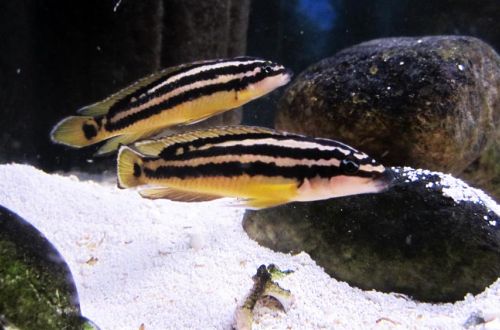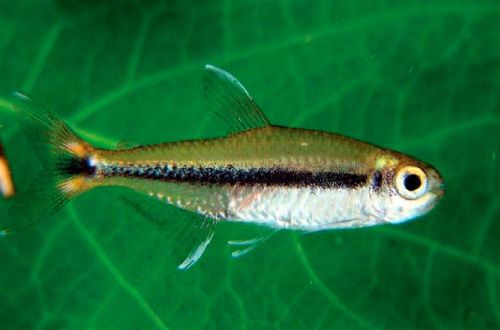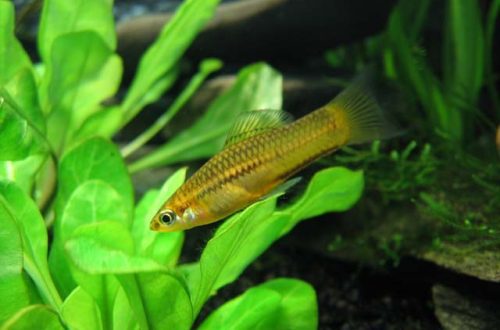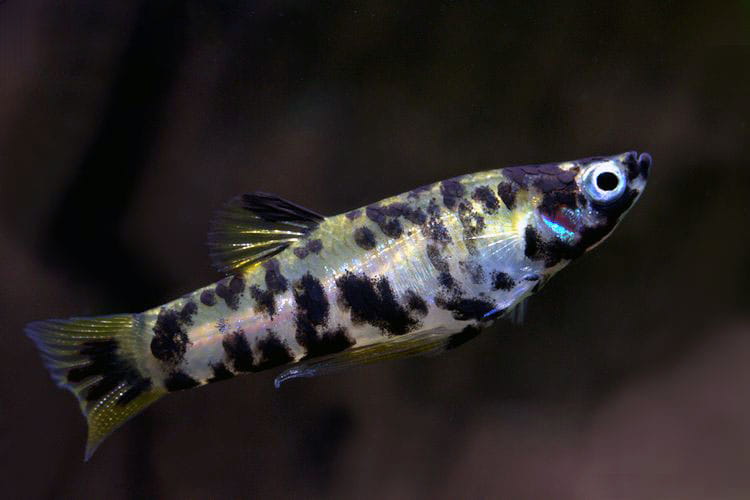
Girardinus
Ghirardinus, scientific name Phalloceros caudimaculatus, belongs to the Poeciliidae family. A simple unpretentious species, does not differ in bright coloring, but is easy to maintain and breed. An excellent candidate for the role of the first aquarium fish, it will forgive many mistakes of beginners taking the first steps in mastering this hobby.

Habitat
Originally comes from the reservoirs of South America (overgrown slow-flowing streams, backwaters, lakes). However, at present, wild populations are also found on other continents, where they were brought to fight blood-sucking insects (they eat mosquito larvae).
Requirements and conditions:
- The volume of the aquarium – from 50 liters.
- Temperature – 16-22°C
- Value pH — 7.0–8.0
- Water hardness – soft to very hard (5-25 dGH)
- Substrate type – any
- Lighting – moderate
- Salty water is permissible, the concentration is 1 teaspoon of salt (without a slide) per 10 liters
- Water movement – weak or stagnant
- Size – males: about 3 cm, females: 5-7 cm.
- Meals – any
Description
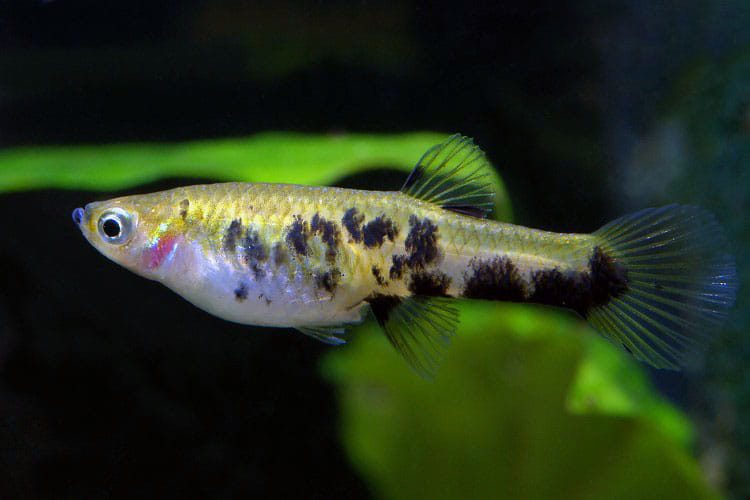
Small humble fish. Females significantly exceed males in size (2 or more times) and have a more rounded, dense body. Male individuals look more elegant. The fins are small, rounded. There is no dominant color, there are silvery, yellowish, with a blue tint and other color variations. The whole body is strewn with numerous dark dots of irregular shape in a chaotic manner, in some cases the pattern continues on the fins. It is worth noting that the yellow/gold forms are of selective origin and are not found in their natural habitat.
Food
An unpretentious omnivorous fish, the Girardinus accepts all types of dry (flakes, pellets), frozen and live foods. Protein-rich foods are recommended. As the latter, small insects and crustaceans and their larvae, for example, mosquitoes, as well as bloodworms, fruit flies, daphnia, brine shrimp, are suitable. Feed 2-3 times a day in the amount eaten in a few minutes, it is advisable to remove food residues from the aquarium.
Maintenance and care
An unpretentious species, they can live in various water conditions from soft to very hard water in a wide range of pH values. To fill the aquarium, any tap water is suitable, previously settled for at least a day.
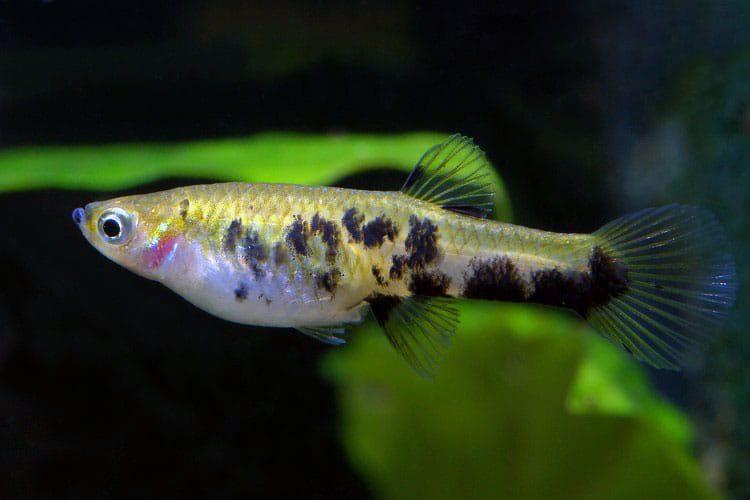
The minimum set of equipment includes a filter and a lighting system. If you have enough plants, you can do without an aerator. The comfortable temperature is between 16 and 22 °C, but for a short period of time they are able to withstand a difference from 10 to 30 °C. This feature also allows you to keep without a heater.
Decoration at the discretion of the aquarist. The only condition is the presence of dense thickets of plants, both root and floating. The optimal tank size is from 50 liters for 3-4 individuals.
Weekly maintenance consists in updating part of the water with fresh water (10-20% of the volume). As necessary, the soil is cleaned from organic waste (excrement, food residues, etc.) and the glass is cleaned from plaque.
Behavior
Peaceful calm look. Girardinus are able to get along with other fish of similar temperament and size. A harmonious community is formed with members of the Poeciliidae family.
Breeding / breeding
Easy to breed, do not require the creation of special conditions. At home, spawning can occur at any time during the year. They are classified as viviparous species, since the fry appear already fully formed, bypassing the stage of eggs. The incubation period takes place in the body of the female and is 4-6 weeks. Juveniles are recommended to be deposited in a separate tank in order to avoid the manifestation of predation by adult fish.



